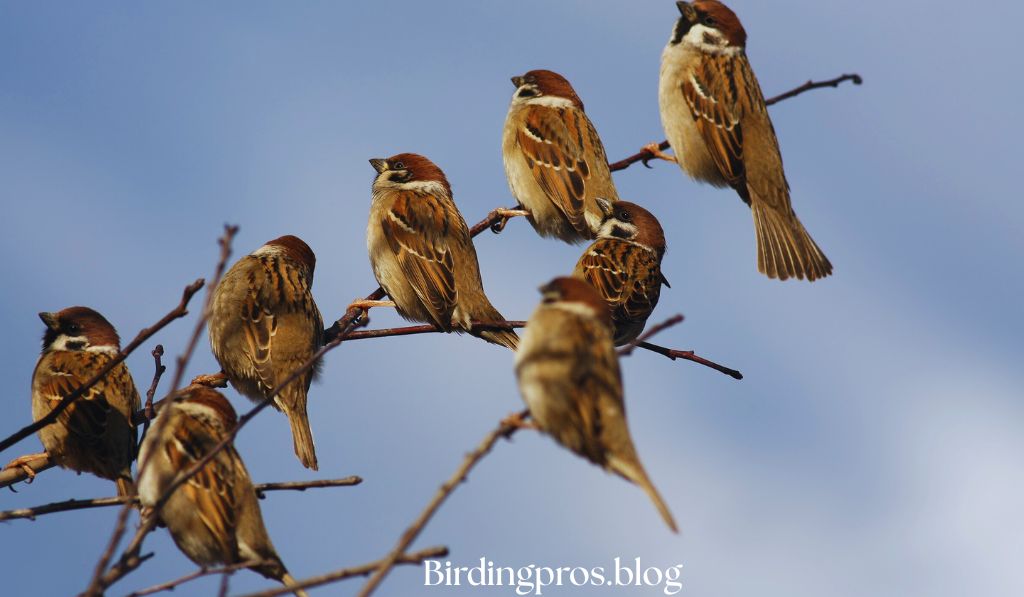Table of Contents
ToggleThe Enchanting World of Birdwatching
As someone who has spent infinite hours with binoculars in hand, I can let you know that birdwatching is one of the most worthwhile pastimes you may pursue.
There’s a few magicians approximately spotting an extraordinary species or witnessing the sleek flight of birds of their herbal habitat. The first time I noticed a painted bunting with its colourful hues, I became absolutely hooked on this captivating activity.
Birdwatching connects you with nature in a profound way. You’ll begin to notice facts in the environment you in no way saw in advance than, from the diffused actions in tree branches to the awesome calls that pick out distinct species. It’s now not just about seeing birds—it is about experiencing them worldwide.
Why Birdwatching Captures Hearts
When you have interplay in birdwatching, you’ll discover:
- The thrill of recognizing new species to add on your existence listing
- Deep know-how about bird behaviors and habitats
- A high-quality excuse to discover lovely natural regions
- A community of like-minded fans to percentage testimonies with
- Improved intellectual nicely-being through connecting with nature
I find that bird watching offers me a sense of purpose when I’m outside. Whether I’m on my own with my mind or sharing the experience with fellow birders, there’s continually something new to find out.
Essential Gear for Your Birding Adventures

Before you head out to discover some feathered friends, you may want a few primary machines. I’ve observed through years of experience that high-quality gear makes all the distinction.
| Equipment | Purpose | My Recommendation |
|---|---|---|
| Binoculars | Viewing distant birds | 8×42 magnification offers good balance between power and field of view |
| Field Guide | Identifying species | Both physical books and smartphone apps are useful |
| Notebook | Recording sightings | Waterproof journals work best in all conditions |
| Camera | Documenting observations | Even a smartphone camera can capture memorable moments |
| Comfortable Footwear | Walking various terrains | Waterproof hiking boots have saved me on many occasions |
| Weather-appropriate Clothing | Staying comfortable | I prefer layers that can be adjusted as temperatures change |
I usually tell new birders that they don’t want the most expensive device to begin with. Begin with what you could come up with the money for, and upgrade as you become more invested within the interest.
Local Parks and Gardens: Birding in Your Backyard
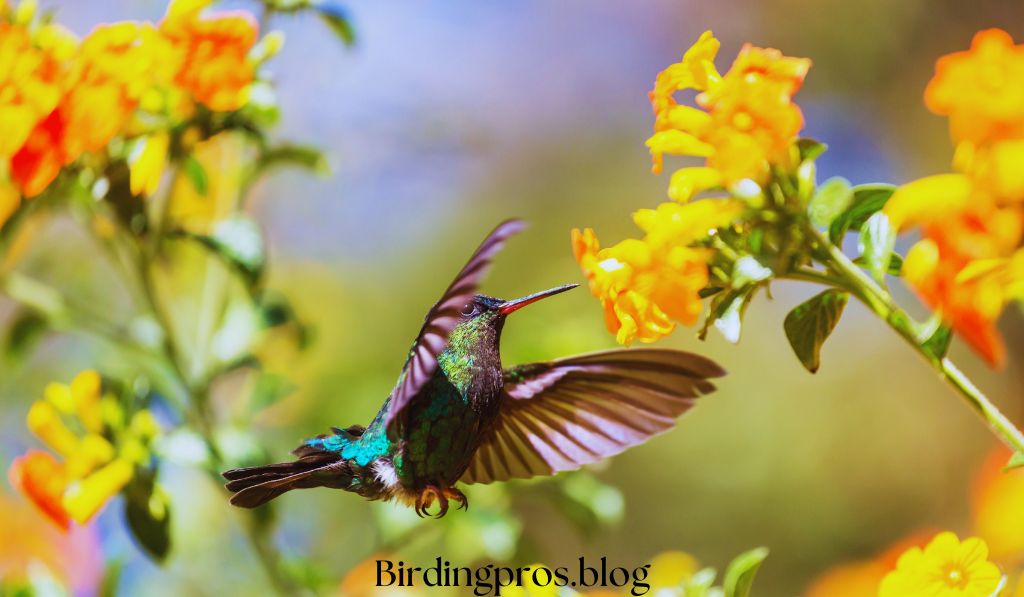
I’ve discovered a number of my most memorable fowl encounters simply minutes from my home. Local parks and gardens feature miniature ecosystems that attract a shocking type of birds.
These reachable green areas offer handy opportunities to exercise your identification talents without traveling far.
Many humans forget those nearby places, but I’ve noticed dozens of species in my neighborhood park by myself. Urban planners are an increasing number of incorporating neighborhood flowers and water capabilities that create best habitats for our avian friends.
Benefits of Starting Your Birding Journey Locally
When I first began birdwatching, I made the error of thinking I needed to adventure to distinct locations. Now I realize better:
- You’ll turn out to be in element familiar with community species and their seasonal styles
- It’s price range-excellent without a excursion fees
- You can go to frequently to have a look at changes within the path of the yr
- You’ll extend center identity competencies in a cushty setting
- It’s less complicated to join community chicken walks and meet skilled mentors
I visit my neighborhood park at least as soon as per week, and I still see a few issues nearly whenever. The familiarity sincerely enhances the enjoyment because of the truth I notice subtle modifications in fowl populations.
Strategies for Urban Birding Success
To maximize your urban birdwatching revel in, I’ve advanced those techniques:
- Visit at some point of early morning when birds are most lively and parks are quietest
- Find regions with various plant life—birds love variety
- Focus on water abilities like ponds, fountains, or streams
- Learn to find out not unusual birds with the resource in their songs earlier than you even see them
- Keep a report of seasonal website site visitors to anticipate at the same time as certain species would possibly appear
- Check for chook feeders or botanical gardens that attract unique species
I’ve found that consistency is key. When I go to the equal locations regularly, I expand a baseline record that allows me to be aware of unusual or uncommon visitors once they seem.
Forests and Woodlands: Discovering Avian Diversity

When I’m craving a richer bird, I head to forests and woodlands. These complex habitats guide first rate biodiversity with their layered plants imparting severa niches for unique species.
Walking through a wooded place, you could come across birds within the canopy, understory, and wooded area ground—every area website hosting its very personal avian network.
I love how forests exchange sooner or later of the seasons, bringing considered one of a type birds into recognition. Spring migration brings warblers to the treetops, at the identical time as iciness might also screen woodpeckers more effortlessly in the direction of naked branches.
Types of Birds Thriving in Wooded Areas
In my revel in, forests host a number of the maximum fascinating bird behaviors and species:
- Woodpeckers: I by no means tire of looking these birds drum on timber for meals and conversation
- Owls: Though hard to identify, hearing their calls at nightfall is typically thrilling
- Thrushes: Their melodious songs regularly fill the forest with adorable music
- Warblers: These colorful migrants are the spotlight of spring birding for me
- Hawks: Watching the ones raptors bounce above the cover demonstrates nature’s majesty
- Nuthatches: I revel in searching these agile birds pass headfirst down tree trunks
Each wooded area type—deciduous, coniferous, or combined—offers its very own particular chicken community. I make a component to go to special wooded area habitats at some point of the year.
My Proven Techniques for Forest Birdwatching
I’ve delicate these processes over years of wooded area birding:
- Move slowly and intentionally to keep away from startling birds
- Stop regularly to pay attention—many wooded area birds are heard earlier than they will be seen
- Scan specific heights systematically, from floor to cowl
- Wear earth-toned clothing that blends with the surroundings
- Learn to apprehend “fowl occasions”—blended species flocks that go with the flow thru the woodland together
- Visit edges between forest and discipline in which chicken interest is often targeted
When I look at the practices, I usually see 50% extra species than as soon as I’m rushing or making noise. Patience in reality is the most important expertise in forest birding.
Wetlands and Marshes: Havens for Water-Loving Birds
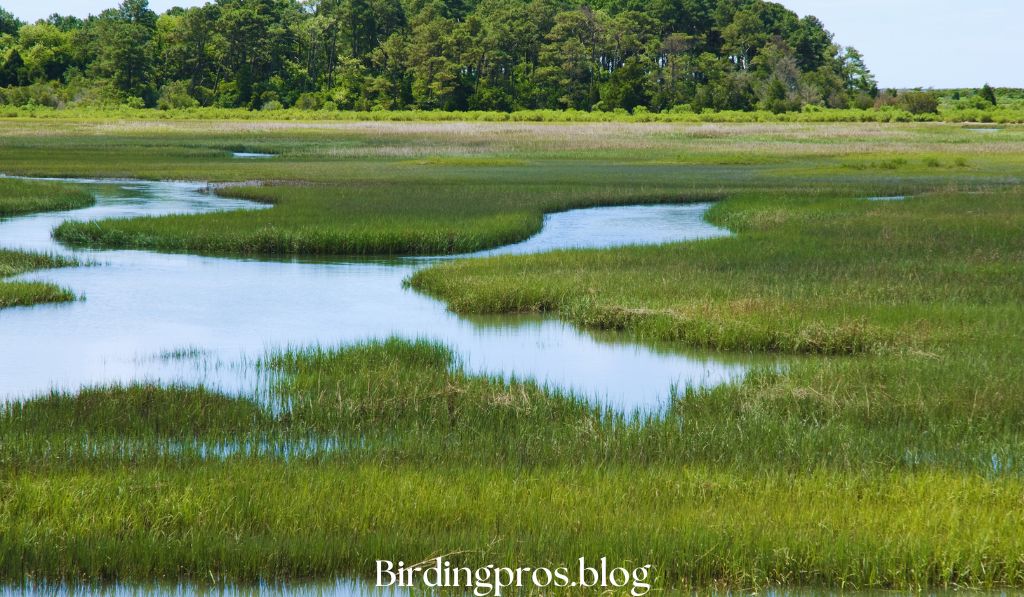
Wetlands keep a completely unique place in my coronary heart as birding places. The abundance of food and shelter in those powerful ecosystems makes them absolute hotspots for bird range.
When I visit a healthy marsh or swamp, I’m regularly beaten via the sheer amount of birds seen right away.
These habitats help experts with captivating adaptations for aquatic residing. From birds with specialized payments for probing dirt to people with water-proof feathers for diving, wetland species display nature’s splendid layout.
The Rich Diversity of Wetland Birds
I’ve found these fantastic agencies in wetland environments:
- Wading birds: Herons and egrets stalk the shallows with wonderful endurance
- Waterfowl: Ducks, geese, and swans display notable range in feeding strategies
- Rails and crakes: These secretive birds project even professional birders like me
- Shorebirds: Sandpipers and plovers perform aerial ballets alongside mudflats
- Raptors: Ospreys and harriers hunt above marshes with specialised techniques
- Songbirds: Specialized species like marsh wrens and pink-winged blackbirds fill the air with calls
I in particular enjoy searching the social dynamics between one-of-a-kind species as they percentage those efficient habitats, each exploiting awesome resources.
Seasonal Patterns in Wetland Birding
I plan my wetland visits steady with those seasonal opportunities:
- Spring: Migration brings masses of birds moving northward
- Summer: Nesting season reveals captivating breeding behaviors
- Fall: Different migration patterns convey new species thru
- Winter: Concentrated waterfowl populations create outstanding gatherings
I’ve determined that water tiers dramatically have an impact on which birds are present. After heavy rains, shorebirds seem on newly uncovered dust, while drought could probably concentrate fish and lure fishing birds like herons.
Coastal Areas and Beaches: Seabird Spectacles
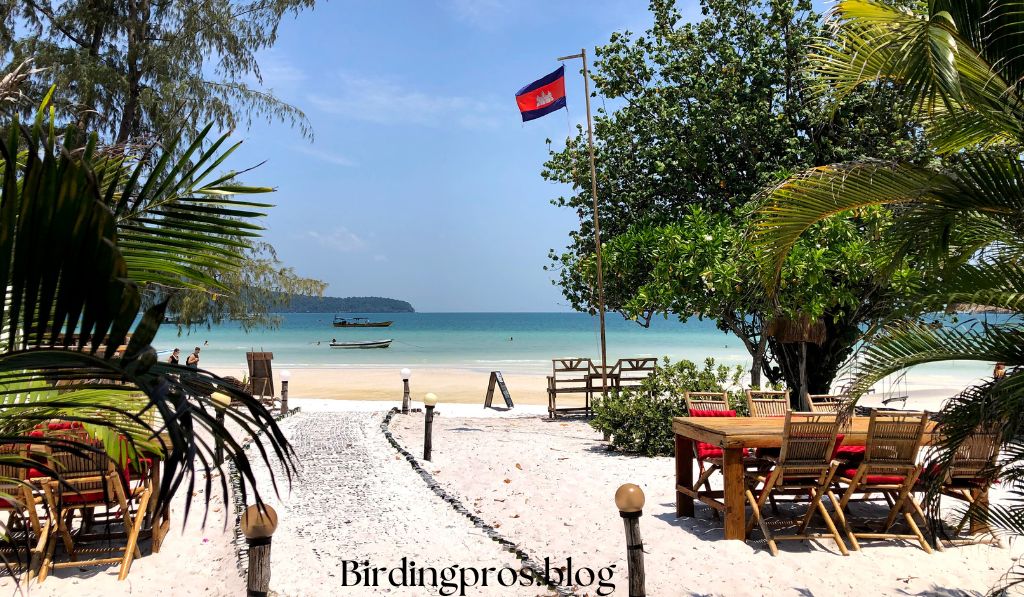
There’s not anything quite similar to the frenzy of salt air and the sound of crashing waves to excite me as a birder. Coastal environments offer a number of the maximum dramatic birding memories to be had.
The intersection of land and sea creates precise opportunities to take a look at specialised birds that are not positioned elsewhere.
I make as few journeys to the coast each 12 months, timing them to coincide with migration durations at the same time as the range is maximum.
The dynamic nature of these habitats—constantly fashioned by way of tides, storms, and seasons—ensures that no visits are ever the identical.
Shorebirds and Seabirds: Masters of Different Domains
My coastal birding makes a speciality of those captivating groups:
- Gulls and terns: Far greater diverse than most humans understand, with subtle identification demanding situations
- Sandpipers and plovers: These shorebirds race along seashores with exceptional feeding behaviors
- Pelicans and gannets: Their notable diving shows in no way fail to affect me
- Cormorants and frigatebirds: These effective fliers have mastered life by means of using the ocean
- Albatrosses and petrels: On pelagic trips, those ocean wanderers fill me with awe
- Loons and grebes: Watching their underwater hobbies from coastal viewpoints is constantly profitable
I especially enjoy studying the numerous strategies those birds use to take advantage of marine resources—from plunge-diving to surface-skimming to tide-following processes.
Understanding Tidal Influences on Bird Activity
I’ve found to time my coastal birding around tidal cycles:
| Tide Phase | Bird Activity | Best Observation Strategy |
|---|---|---|
| High Tide | Birds roost in concentrated groups | Focus on known high-tide roosts |
| Falling Tide | Birds begin moving to feeding areas | Watch for flight patterns between locations |
| Low Tide | Maximum feeding activity as invertebrates are exposed | Scan exposed mudflats and tidal pools |
| Rising Tide | Birds concentrate in remaining feeding areas | Target the last exposed areas |
I commonly test tide tables earlier than planning a coastal birding experience. Being in the proper region at the right time can advise the difference between seeing dozens or loads of birds.
Mountains and Highlands: Birds of the Heights
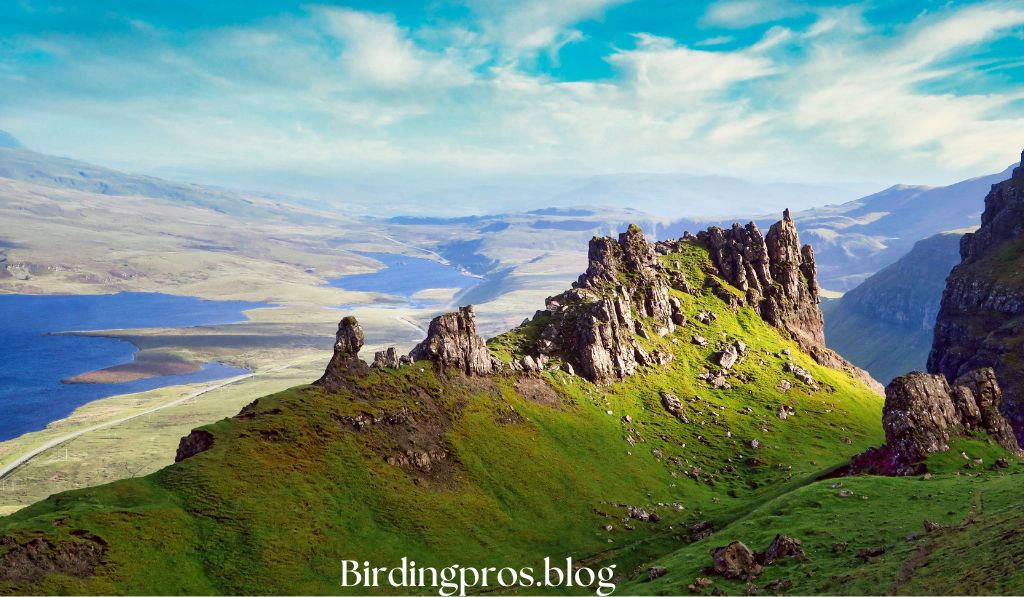
The first time I climbed above the tree line specifically to search for birds, I was rewarded with species I’d in no way visible before. Mountain environments host specialized birds tailored to harsh situations and shorter developing seasons.
The clean air and open vistas moreover make mountain birding logistically unique—you may often spot birds from extra distances.
I admire how mountains create first rate life zones based on elevation. An unmarried day of birding can take you via multiple habitats, each with its very personal chook community, absolutely by means of mountain climbing higher or descending.
High-Altitude Specialists to Watch For
These mountain birds have captured my creativeness through the years:
- Golden eagles: Watching the ones large raptors experience thermals above mountain ridges is breathtaking
- Ptarmigan: Their seasonal camouflage demonstrates satisfactory variation to mountain environments
- Rosy finches: These hardy birds thrive wherein few exceptional songbirds can continue to exist
- Dippers: I’m interested by those aquatic songbirds that plunge into bloodless mountain streams
- Alpine accentors: Seeing those birds hop amongst rocks above treeline always seems like an achievement
- Mountain bluebirds: Their notable blue plumage stands out dramatically in competition to alpine meadows
I locate that mountain species are frequently greater approachable than their lowland opposite numbers, probably due to the truth they encounter fewer people.
Overcoming Mountain Birding Challenges
I’ve discovered to put together for those particular issues:
- Start early to keep away from afternoon storms commonplace in mountains
- Bring greater layers as temperatures can trade suddenly with elevation and weather
- Use a spotting scope to take a look at remote birds across valleys
- Allow greater time for everything—movement is slower at excessive elevations
- Stay hydrated even when it is cool—mountain air is deceptively dry
- Be organized for brief changing situations with appropriate system
When I take a look at those tips, my mountain birding journeys aren’t most effective greater effective but also greater secure and further thrilling.
Deserts and Arid Regions: Surprising Avian Oases

People often wonder after I communicate about barren region birding, however those seemingly barren landscapes host remarkably tailored chook groups.
I’ve had a number of my maximum memorable birding reviews in arid environments, in which the sparse vegetation makes birds less complicated to spot and their behaviors greater visible.
Desert birds have evolved charming strategies to address excessive temperatures and restrained water. Their versions—from specialized kidneys to nocturnal behavior—exhibit nature’s ingenuity within the face of tough conditions.
Desert Survivors: Remarkable Adaptations
I’m particularly stimulated by using manner of these barren region experts:
- Greater roadrunner: Watching this iconic bird dash throughout the panorama never gets vintage
- Cactus wren: Their functionality to nest within defensive spiny vegetation demonstrates great edition
- Gila woodpecker: The way they devise houses in towering saguaro cacti fascinates me
- Burrowing owl: These floor-dwelling owls have charmed me with their sunlight hours hobby
- Phainopepla: Their vivid black plumage and berry-centered weight-reduction plan is uniquely ideal to barren vicinity lifestyles
- Verdin: These tiny birds construct insulated nests to deal with temperature extremes
I’ve noticed that desolate tract birds are regularly greater vocal and active all through early morning and past due afternoon, taking refuge in the path of the hottest hours—a pattern I observe myself while birding the ones regions.
Respectful Desert Birdwatching Practices
When birding in fragile wilderness environments, I observe those concepts:
- Stay on installed trails to protect sensitive soils and vegetation
- Carry plenty of water for yourself (I need at least one gallon steady with day)
- Use modern-day shade for observation points in vicinity of drawing near birds at once
- Visit water resources at dawn and dusk whilst bird pastime peaks
- Keep a specifically respectful distance from nests, as barren area birds have fewer nesting alternatives
- Learn to apprehend signs and symptoms and signs of heat stress in yourself and others
By following those recommendations, I make certain that my presence doesn’t upload additional strain to birds already handling tough conditions.
Tropical Rainforests: Ultimate Biodiversity Hotspots
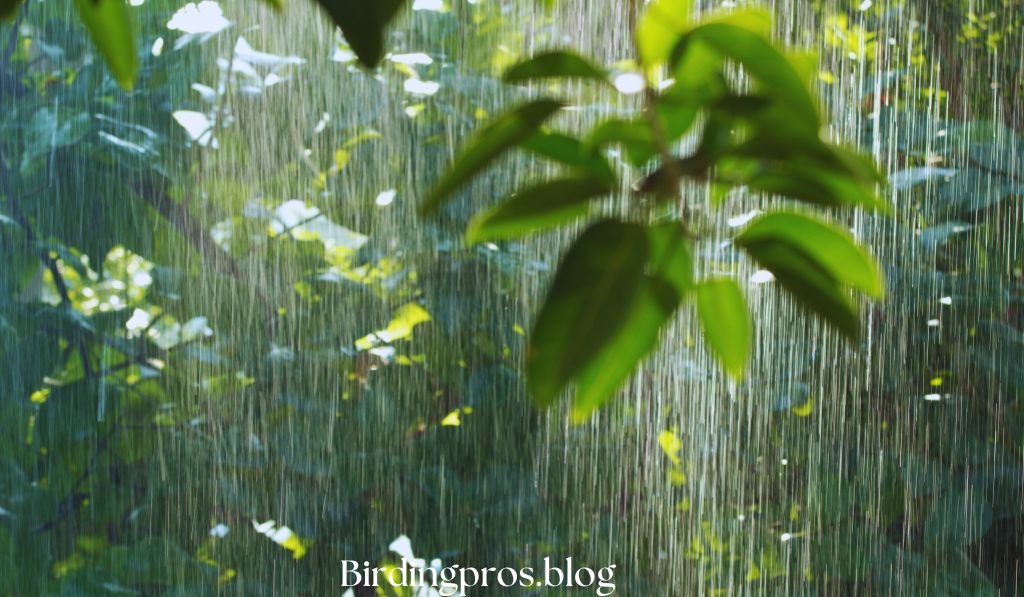
Nothing prepares you for the sensory enjoyment of birding in a tropical rainforest. The symphony of calls, flashes of shade, and sheer variety of species can be overwhelming in the beginning.
When I made my first trip to a rainforest, it took several days to adjust to identifying birds in this complicated environment.
Tropical forests host extra hen species than some different habitats on Earth. The vertical stratification of those forests—from woodland floor to understory to canopy to emergent wood—creates infinite niches that birds have advanced to fill.
Navigating the Rich Tapestry of Rainforest Birds
After a couple of rainforest expeditions, I’ve developed those techniques:
- Focus on one organization of birds at a time to keep away from sensory overload
- Learn to find out blended-species flocks that skip through the woodland
- Visit wooded area edges and gaps in which visibility is better
- Look for fruiting bushes that lure a couple of species
- Listen carefully—many rainforest birds are heard far more regularly than visible
- Seek out specialised microhabitats like bamboo stands or palm swamps
I’ve discovered that guided walks with neighborhood experts are useful in rainforests. Their intimate know-how of calls and favored habitats permits locate species I would in no way find out on my own.
Rainforest Birding Challenges and Solutions
Through trial and blunders, I’ve developed the ones strategies:
- Use quick-drying, mild-weight garb to cope with humidity
- Apply insect repellent far from optical device to avoid harm
- Protect cameras and binoculars from moisture with silica packets and rain covers
- Visit canopy towers and walkways for distinct perspectives on the forest
- Be patient—birds regularly seem abruptly and disappear surely as fast
- Learn to “push” lightly to bring curious birds into view
Despite the demanding situations, my rainforest birding tales rank among my maximum valuable wildlife encounters.
Bird Sanctuaries and Reserves: Protected Havens

I make a component of supporting fowl sanctuaries and reserves through each visit and donations. These protected areas play an essential function in conservation efforts and frequently provide the nice-managed habitat for threatened species. As improvement keeps encroaching on natural regions, those sanctuaries grow to be increasingly vital refuges.
Many reserves provide outstanding facilities for birders, consisting of blinds, boardwalks, and educational programs. I respect how the ones services make quality bird searching available to people of each age and physical talents.
The Critical Role of Protected Areas
I’ve determined the ones advantages of hen sanctuaries firsthand:
- They hold vital habitat that might otherwise be out of place to improvement
- Many attention on specific habitat kinds which can be especially threatened
- They create corridors that connect huge herbal areas
- They often repair damaged habitats to greater herbal conditions
- They provide controlled environments wherein conservation practices may be tested
- They function instructional resources to inspire future conservationists
When I visit a properly-controlled sanctuary, I’m not truely gambling tremendous birding—I’m supporting critical conservation artwork.
Guided Tours vs. Independent Exploration
I’ve skilled every techniques and find value in every:
| Guided Tours | Independent Exploration |
|---|---|
| Expert guides locate more species | Freedom to focus on birds that interest you |
| Learn detailed information about habitat and behavior | Set your own pace and schedule |
| Meet other enthusiastic birders | Enjoy solitude and personal connection with nature |
| Support sanctuary employment programs | Develop your own observation skills |
| Access restricted areas not open to the public | Visit at off-peak times when birds may be more active |
I commonly e-book as a minimum one guided excursion while touring a cutting-edge sanctuary, then spend time beyond regulation exploring independently as soon as I’m acquainted with the format.
Traveling for Birdwatching: Expanding Your Horizons

Traveling especially for birding has grown to be one of my greatest joys. There’s something deeply fine about gaining knowledge of chook species in a modern-day location, planning the correct itinerary, and then experiencing the birds of their natural habitats.
Each enjoy adds not genuinely species to my existence list however also wealthy recollections and deeper know-how of world ecosystems.
Bird-focused travel has taken me to locations I might in no manner have visited in any other case, from faraway islands to mountain villages.
I’ve connected with local groups, supported conservation efforts, and advanced an extra nuanced appreciation for the demanding situations dealing with birds globally.
Planning the Perfect Birding Expedition
Based on severa a success trips, right right here’s my making plans manner:
- Research the outstanding seasons for birding your vacation spot—timing is crucial
- Connect with close by birding groups for modern records
- Consider hiring nearby courses who understand exactly in which to find aim species
- Book motels near pinnacle birding spots to maximize morning intervals
- Build rest days into your itinerary—birding adventure can be exhausting
- Pack bendy apparel for variable situations
- Research cultural norms and attain vital allows earlier
I’ve noticed that permitting flexibility in my time table regularly ends in sudden possibilities, whether or not it is following up on a tip, approximately an unprecedented sighting or spending extra time in a particularly powerful location.
Global Hotspots Worth Your Travel Budget
After exploring a number of the arena’s top birding destinations, the ones places stand out:
| Location | Highlight Species | Best Season |
|---|---|---|
| Costa Rica | Resplendent Quetzal, Scarlet Macaw | December-April |
| South Africa | African Penguin, Secretary Bird | September-November |
| Ecuador | Andean Condor, Sword-billed Hummingbird | October-March |
| Australia | Cassowary, Lyrebird | September-October |
| Kenya | Lilac-breasted Roller, African Fish Eagle | January-February |
| Alaska | Puffins, Bald Eagle | June-July |
I prioritize places going through development pressure or climate threats, understanding that destiny opportunities to look sure species may be limited.
Capturing the Magic: Bird Photography
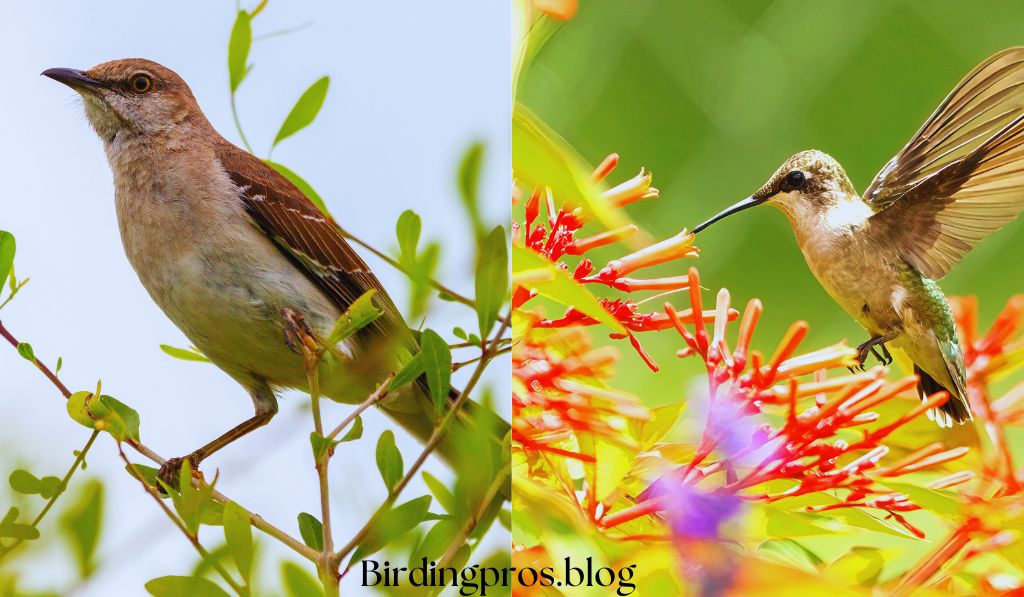
What began as simple documentation of species for my lifestyle list has advanced into a passionate pursuit of chook photographs.
Capturing birds via my lens has brought a brand new dimension to my birding revel in. It worries me to apprehend behavior extra deeply, as looking beforehand to moves is fundamental to getting that ideal shot.
I discovered that pictures and traditional bird watching supplement each one of a kind superbly. Sometimes I pay attention totally to remarks, even as other outings are committed to pictures. Both procedures deepen my reference to birds in precise approaches.
Essential Bird Photography Tips I’ve Learned
Through years of workout, I’ve superior the ones techniques:
- Prioritize true mild—early morning and past due afternoon offer the most flattering illumination
- Learn chicken behaviors to anticipate motion moments
- Focus on the eye—a sharp eye connects traffic to the problem
- Be affected person and permit the chicken come to you even as possible
- Use the very pleasant shutter velocity you can in given slight situations
- Practice easy panning for birds in flight
- Create easy backgrounds that do not distract out of your difficulty
I started out with modest equipment and steadily upgraded as my talents progressed. Remember that discipline, craft and expertise of your subjects depend on variety more than luxurious gear.
Ethical Considerations in Bird Photography
I comply with the ones requirements to make sure my pictures could no longer damage birds:
- Maintain a respectful distance, using longer lenses in vicinity of drawing near too closely
- Never disturb nesting birds for a photograph
- Avoid the usage of flash photography, in particular for nocturnal species
- Limit the usage of playback calls, that could stress territorial birds
- Never regulate the environment to create a “higher” photograph
- Be conscious of sharing location statistics for touchy species
These moral practices ensure that our presence as photographers could no longer negatively affect the very subjects we like to photo.
Conclusion: The Lifelong Journey of Bird Finding
After years committed to locating and looking at birds, I can say with actuality that this pursuit offers inexhaustible rewards.
From local parks to far off rainforests, birds connect us to the herbal global in profound procedures. They educate us approximately about ecology, model, and resilience inside the face of environmental demanding situations.
I encourage you to start your private bird-finding adventure. Start for your outside, enlarge to close by herbal areas, and possibly in the future find yourself watching toucans inside the Amazon or penguins in Antarctica.
Along the way, you can no longer surely identify capabilities however additionally a deeper appreciation for the elaborate internet of lifestyles that sustains us all.
Remember that every time you notice and respect you become a small ambassador for conservation. In our unexpectedly converting international, birds want engaged human allies more than ever before. Your hobby and hobby depend—to the birds and to our shared future.

